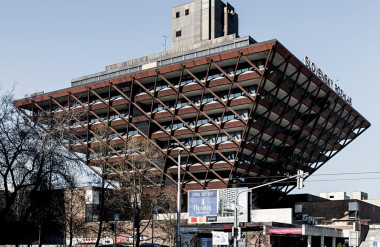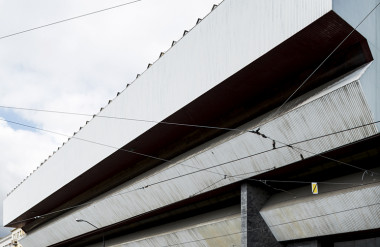The history of Slovakia is riddled with political unrest and unwanted occupation, with the Slovak people having repeatedly been denied a voice throughout history. In the years following World War I, Slovakia was forced into the common state of Czechoslovakia; the territory was dismembered by the Nazi regime in 1938 and occupied by the Nazis for most of the Second World War, before being eventually liberated by Soviet and Romanian forces in 1945. Over the next four decades of communist rule—first by communists within Czechoslovakia itself and then later by the Soviet Union—the architecture of Slovakia came to develop into a unique form of sci-fi postmodernism that celebrated the shift in industrial influence at the time.

Seceding from Chechoslovakia in 1939, the Slovak Republic—which was at least nominally Slovakia’s first independent state—saw a very close alliance with Germany as vital for the health of Slovakia’s first independent state. At the time, the two main opposition groups in the Republic were a democratic group with ties to the Czechoslovak government-in-exile, and an all-Slovak communist group with close ties to another communist group in Moscow. The two parties launched the Slovak National Uprising in 1944, which was largely quashed by the German forces until Soviet and Romanian forces liberated them in 1945. [1] The Memorial and Museum of the Slovak National Uprising in Banská Bystrica, designed by Dušan Kuzma, houses military equipment and a permanent exhibition about the anti-fascist resistance movement in Europe in the years 1939–1945.

In the years after WWII, the Czechoslovak Communist Party was voted into power in 1948 (with their support coming largely from the Czech region of the country), in effect making Czechoslovakia a satellite state of the soviet union. The country was later invaded by the Warsaw Pact forces in 1968, bringing it under full Soviet rule. It was during this time that the influence of Soviet design began to appear most strongly in the architecture of Slovakia. The postwar industrial influence led to the incorporation of prefabricated structures, specifically in the housing and community buildings. In Bratislava, more than 90% of the city’s 430,000 residents lived in postwar industrialized housing by the late 1980s. [2]

There were, however, a small class of architects who turned against the standardization of industrialist design, and turned instead toward postmodernism and “High-Tech.” [3] These designs are what would today be associated with sci-fi and outer-space, and are accentuated by the technological advances of the time, and perhaps the Space Race between the Soviet Union and the United States during the 1960s and 70s.

A great example of the influence of these Soviet tendencies is Slovakia is the “UFO” by Juraj Hovorka. The monument is located in an area called Medzijarky, a small park just east of the center of Bratislava. A complicated and at times neglected country, Slovakia possesses many architectural gems that not only allude to their troubled past but provide a unique contribution to the history of Soviet architecture and postmodernism in Eastern Europe.
References:
- Kirschbaum, Stanislav J. “Slovak Nationalism in Socialist Czechoslovakia.” Canadian Slavonic Papers / Revue Canadienne Des Slavistes 22, 1980, 2. Web. 14 Feb. 2018
- Haddad, Elie G., and Rifkind, David. A Critical History of Contemporary Architecture: 1960-2010. Routledge, 2016. Web. 14 Feb. 2018.
- Ibid.
See full album:
(Source: Archdaily)























